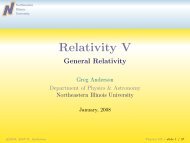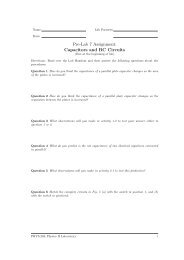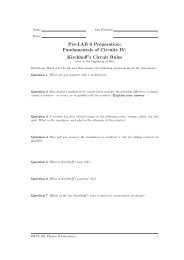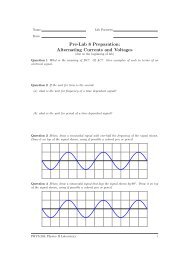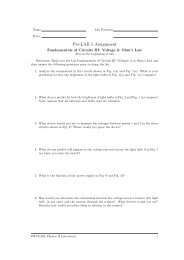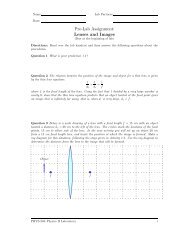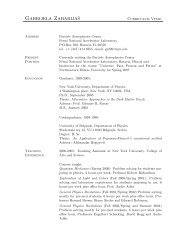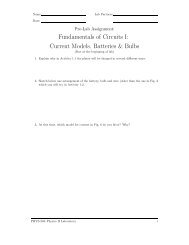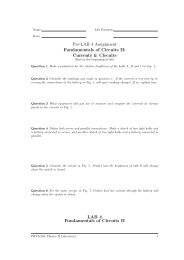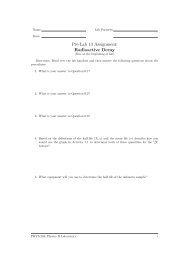Position, Displacement, and Velocity Excercise 1: Position and ...
Position, Displacement, and Velocity Excercise 1: Position and ...
Position, Displacement, and Velocity Excercise 1: Position and ...
Create successful ePaper yourself
Turn your PDF publications into a flip-book with our unique Google optimized e-Paper software.
<strong>Position</strong>, <strong>Displacement</strong> <strong>and</strong> <strong>Velocity</strong> v 0.4<br />
Question 1.6 During the time period shown on the graph, choose an initial time <strong>and</strong> a final<br />
time that gives the greatest displacement.<br />
<strong>Excercise</strong> 2:<br />
Average <strong>Velocity</strong><br />
For an object that moves from an initial position xi at an initial time ti to a final position xf<br />
at the final time tf, the average velocity is defined as<br />
v = ∆x<br />
∆t = xf − xi<br />
tf − ti<br />
Question 2.1 In the definition of velocity, why do we use displacement in the numerator as<br />
opposed to a position?<br />
.<br />
Question 2.2 Does our formula for velocity depend on the origin of the time coordinate? That<br />
is to say if you were going to compute the average velocity of an object using the formula above<br />
would it matter what the initial time was on your stopwatch when you began? Explain.<br />
Question 2.3 Consider an object which starts from an initial location of 2 meters as shown<br />
below. If the average velocity of the object is 3m/s, where is the object located after two seconds<br />
PHYS-211: Physics I Workshop 3




